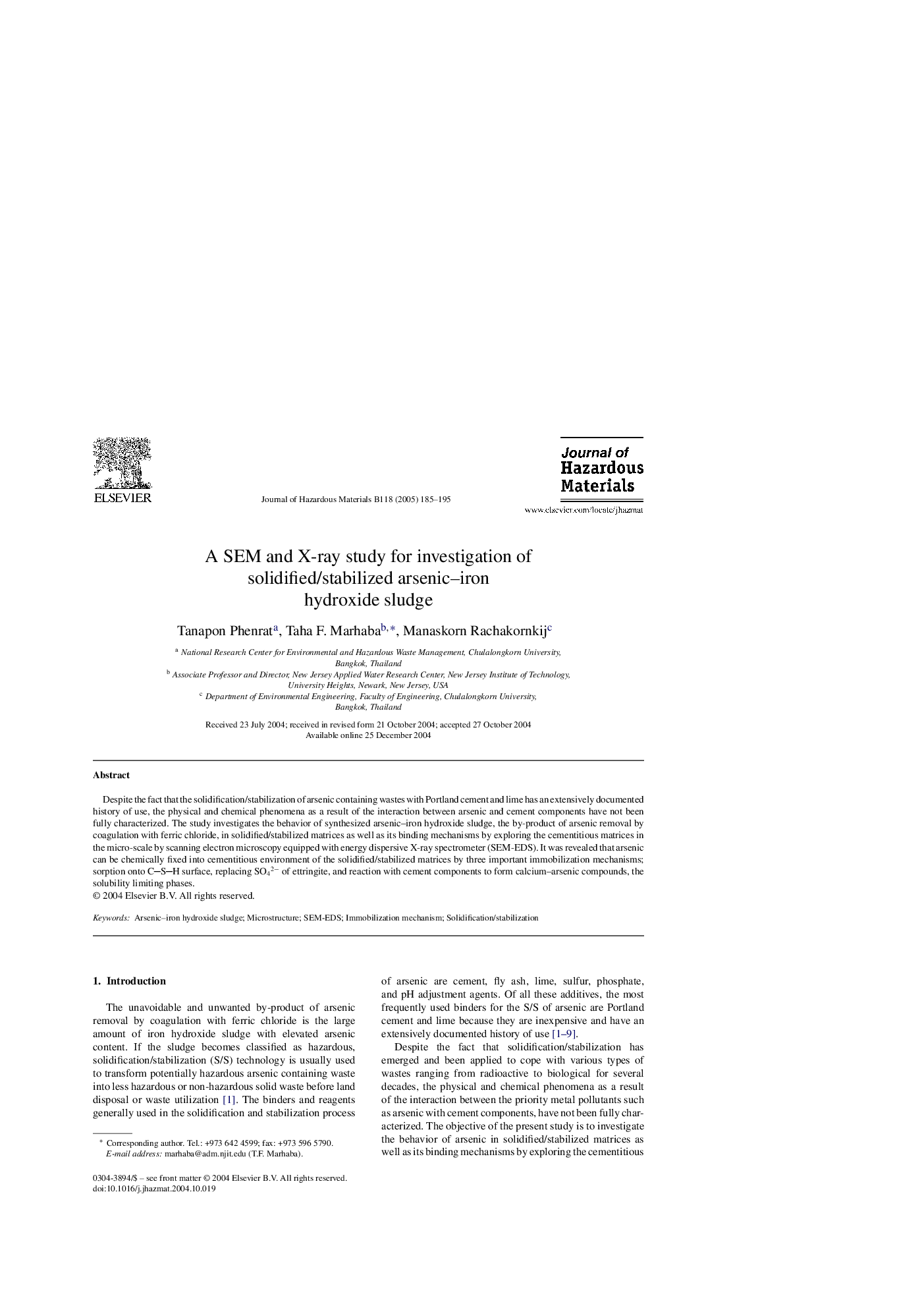| Article ID | Journal | Published Year | Pages | File Type |
|---|---|---|---|---|
| 9674398 | Journal of Hazardous Materials | 2005 | 11 Pages |
Abstract
Despite the fact that the solidification/stabilization of arsenic containing wastes with Portland cement and lime has an extensively documented history of use, the physical and chemical phenomena as a result of the interaction between arsenic and cement components have not been fully characterized. The study investigates the behavior of synthesized arsenic-iron hydroxide sludge, the by-product of arsenic removal by coagulation with ferric chloride, in solidified/stabilized matrices as well as its binding mechanisms by exploring the cementitious matrices in the micro-scale by scanning electron microscopy equipped with energy dispersive X-ray spectrometer (SEM-EDS). It was revealed that arsenic can be chemically fixed into cementitious environment of the solidified/stabilized matrices by three important immobilization mechanisms; sorption onto CSH surface, replacing SO42â of ettringite, and reaction with cement components to form calcium-arsenic compounds, the solubility limiting phases.
Related Topics
Physical Sciences and Engineering
Chemical Engineering
Chemical Health and Safety
Authors
Tanapon Phenrat, Taha F. Marhaba, Manaskorn Rachakornkij,
